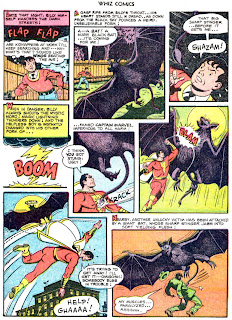Donald, Daisy and the kids are taking a ride near Mt. Mushmore, and Daisy wants to swing by and see the giant carved head of Senator Snoggin.
Donald is nervous. Daisy asks him what's wrong, and he tells her a story of he and the boys getting a job the past spring cleaning up the park grounds for the tourist season, including a clean-up of Senator Snoggin's head.
While cleaning, Donald has trouble with an eagle. After being kicked out it comes back at Donald with a vengeance.
Donald spills a weed killer, which turns Senator Snoggin's nose bright red. In order to get rid of the stain, which won't wash off, Donald uses a jackhammer, which breaks off the senator's nose.
Donald and the boys build a new temporary nose with plaster, with disastrous results.
Donald whittles the nose down to its original shape, but needs to use the jackhammer to set pegs to hold the nose on.
The ultimate gag is after Donald tells Daisy the story the whole thing comes apart.
I've always thought this was one of Barks' masterpieces of gag building, pacing and drawing; one of his best.Imagine my surprise to be flipping through issues of Pep Comics from 1943-44, and find a three-part story, “Catfish Joe,” which has some of the same elements as the later Barks story. Check it out. From Pep Comics numbers 43, 44 and 45:
Okay, so what do you think happened? Here's a thought, what if Carl Barks, in the early part of his comic book career, was going through comic books to see what others were doing. He saw this story and it had some gag elements he liked. Years later he recalled some of those elements and put them into this classic Donald Duck story. As you can see, “Catfish Joe” is no Donald Duck and Larry Harris** is no Carl Barks.
The Donald Duck story by Barks is funnier, better written and better drawn than “Catfish Joe,” but it gives one pause about the creative process and where those ideas come from. I could say that Barks remembered the story consciously and used it as a springboard for his own, or I could let Barks off the hook and say that he had cryptomnesia, which is thinking a memory is an original creation. Memory is a tricky thing.
The two stories make for an interesting comparison.
*I'm sorry that I can only show panels from the Barks story and not the whole thing. I have heard that Disney lawyers troll the internet looking for copyright infringements.
**Harris isn't a bad artist, but uneven from panel to panel. His art reminds me of a cross between Roy Crane and Al Capp. I've never heard of Harris before. It's possible that the Larry Harris of “Catfish Joe” is this Larry Harris, gag cartoonist of the fifties and sixties.


































































